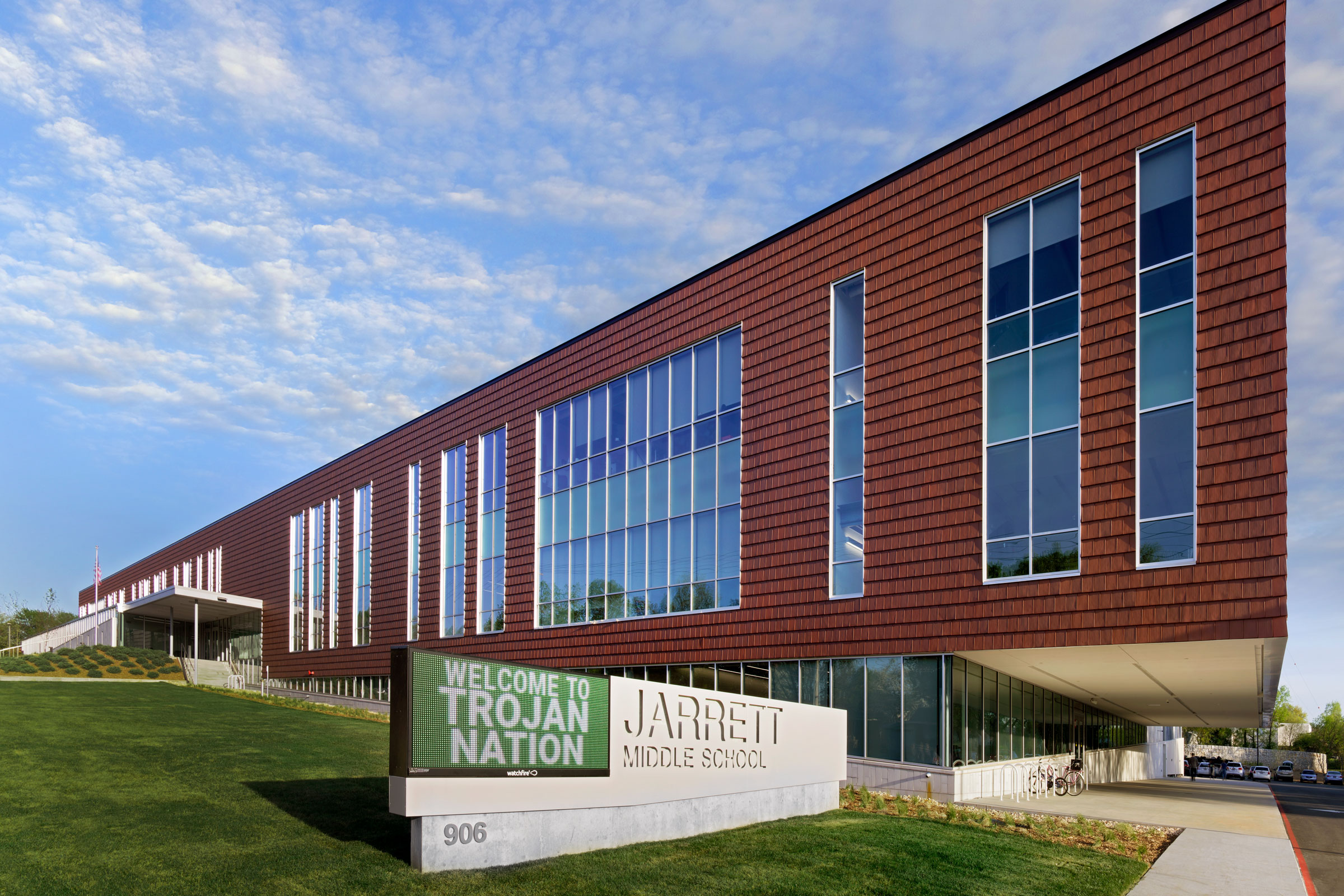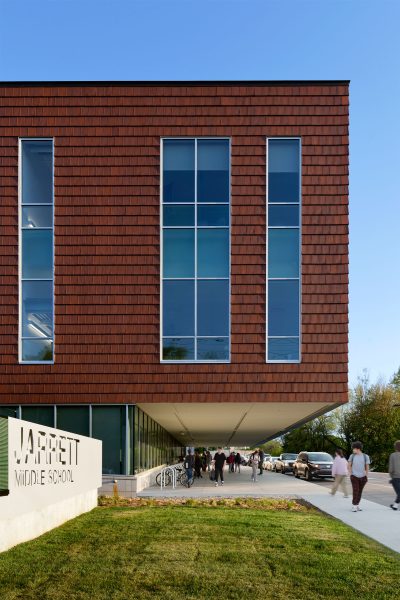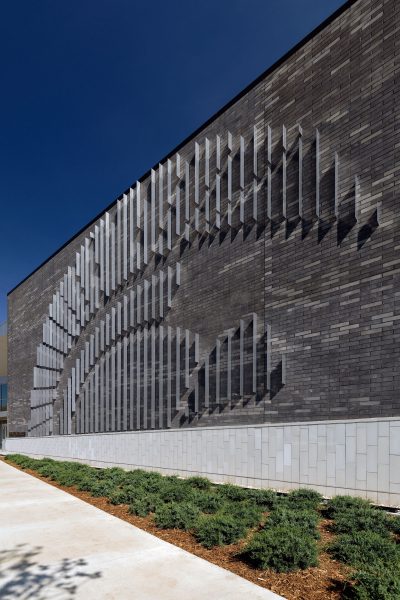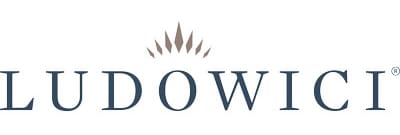Story at a glance:
- Jarrett Middle School was seeking a budget-friendly wall cladding solution for the school’s rebuild.
- Ludowici’s terra-cotta tiles addressed the school’s stormwater and extreme weather issues.
- With the previous building’s proliferation of red brick, Ludowici’s terra-cotta wall tiles fit well aesthetically.
School districts today are under tight budget crunches, which can be a challenge with the aging infrastructure of its buildings.
Case in point is Springfield, Missouri’s Jarrett Middle School—one of three in the city that was built in the 1920s. Over time, as enrollment grew, the building was expanded with a number of additions. Unfortunately the aging structure was beyond repair so options were limited.
“It was determined that, due to constraints on the existing structure and how much work would be required, a renovation was not feasible,” says Matt Thornton, senior project manager for Dake Wells Architecture in Springfield.
The Challenges

Photo by Gayle Babcock, Architectural Imageworks
While the previous funding bond attempt recommended all schools be replaced with new buildings, an assessment study by the district determined which schools to renovate and which to replace. When the vote was passed to replace all three middle schools, including Jarrett, a new bond issue was passed.
“We were hired in 2019 to do design work on Jarrett,” Thornton says. “The plan was to combine the two elementary schools and relocate the new Jarrett Middle School building on the 10-acre site formerly occupied by one of the elementaries. Although we prefer to build middle schools on no less than 40 acres, this was an urban project that we had to go up, and not out, with,” he says.
Space was not the only issue that needed to be addressed. With this project one of the main site strategies was dealing with stormwater, which impacted the school’s roofing options.
The city required considerable native landscaping, so the Dake Wells team was able to take a strip in the center of this site and turn it into a native-planted bioswale to infiltrate and direct stormwater runoff. The rest of the runoff was guided to an underground stormwater detention system under the school’s turf football field.
The Solution
- Photo by Gayle Babcock, Architectural Imageworks
- Jarrett Middle School project, designed by Dake Wells. Photo by Gayle Babcock, Architectural Imageworks
As part of dealing with stormwater and weather overall, the wall cladding material for Jarrett Middle School’s new facility was a key factor. Dake Wells decided the best and most durable option was Ludowici’s NeXclad small format terra-cotta cladding. The company itself has more than 135 years of tile expertise. “We wanted to use it due to its small scale but also the enhanced durability,” Thornton says.
As a manufacturer Ludowici stands behind its product’s performance and durability with a 75-year material warranty, which also includes a color permanent finish, according to Carla V. Hunigan, national market manager, commercial, at Ludowici. “Grade 1 terra-cotta tiles are known to last through a century or more. This is one of the many reasons why architects and specifiers prefer our NeXclad terra-cotta cladding tiles.”
Along with being sturdy and long-lasting, Ludowici’s NeXclad tiles are built to withstand the rain stream effect by repelling water. At Jarrett Middle School the tiles were direct-applied for enhanced water management, durability, and cost savings.
Ludowici’s NeXclad is a versatile cladding solution that offers installation options, depending on the project. The direct-to-sheathing option was chosen as part of the specifications for the school, as it provided a substantial cost savings. Direct-to-sheathing can be installed with rainscreen framing like a rail or girt system. This water shedding system, which includes a drainage mat, two stainless steel clips, and mechanical fasteners, offers enhanced water management and durability and increases the building’s visual impact by between 50 to 70%.
“We have a lot of hail in this area, and the terra-cotta tiles can withstand that well,” Thornton says. “And because we direct-applied the Ludowici tiles, it was very economical for the district since we’re not using mortar or cement but hanging these directly over an air barrier applied to plywood sheathing.”
With these tiles no rainscreen attachment system was required, and the lean facade planning will last for years without the need for pricey tuckpointing or replacements.
The aesthetics of Ludowici’s NeXclad – Small Format Terra Cotta Cladding also make it a great fit for the tight-knit neighborhood. “These connect really well to the nearby homes’ residential scale,” Thornton says. “There are 1,200-square-foot houses in the neighborhood, and we were sliding this 132,000-square-foot middle school into an adjacent hill; it was in very close proximity.” Another benefit is the tile’s origin. NeXclad is made in the US from clay that is harvested in an area near the company’s Ohio factory.
This wasn’t the first time Dake Wells incorporated Ludowici’s terra-cotta tiles in a project. “We’ve used Ludowici’s terra-cotta tile before and have seen it used on other projects,” Thornton says. “We admired its smaller scale and shadow lines, which made it a perfect fit for Jarrett Middle School and the city of Springfield.”




